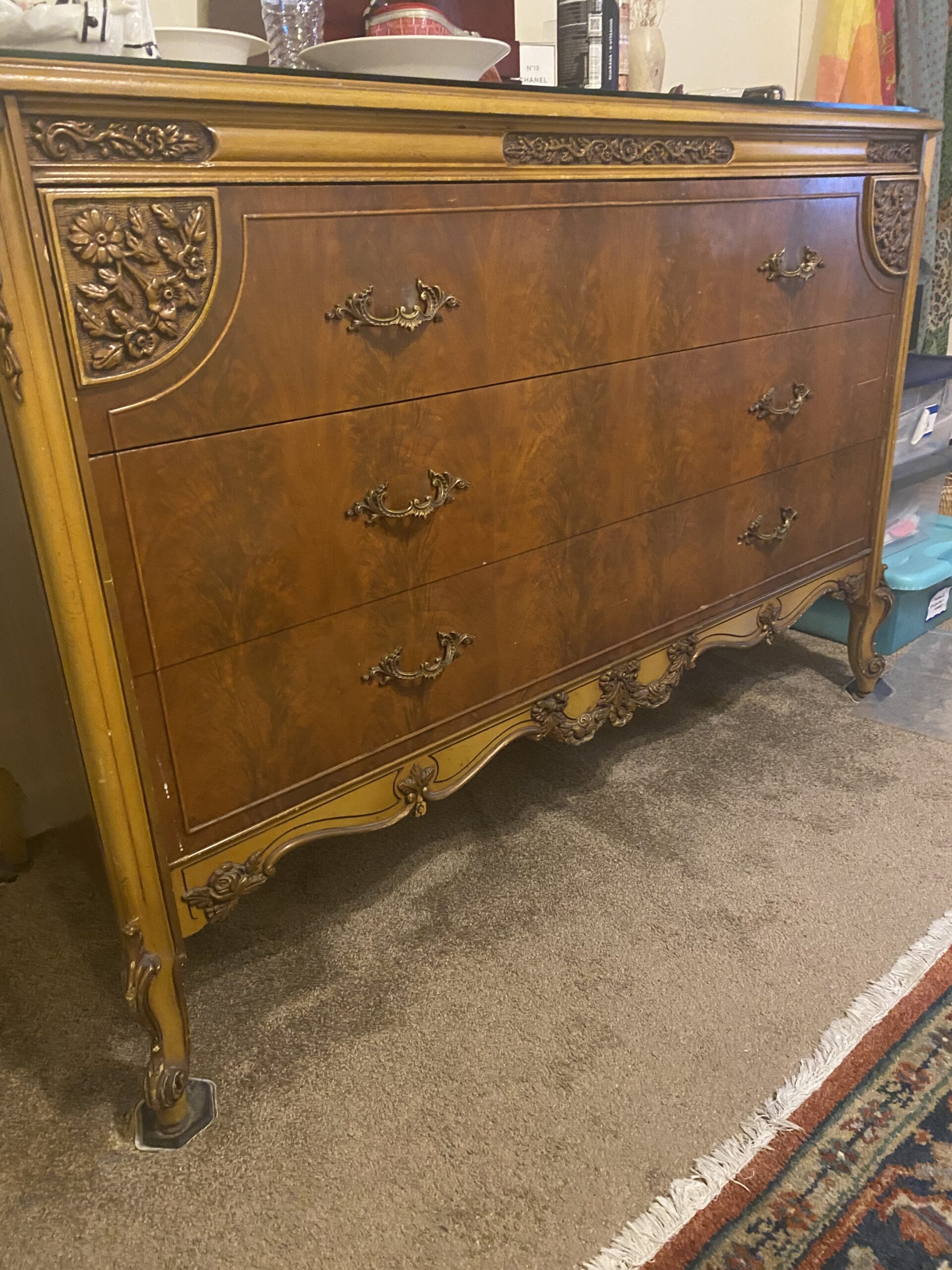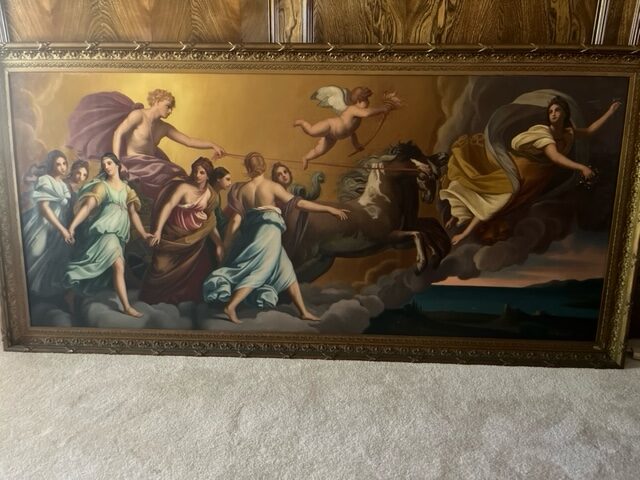Japanese vase
14.5″ tall
7″ wide
4 3/4″ at base
5″ at the top.
No markings or identification on the base of vase.
Highly textured with beads and so on the surface of the vase.
A Fine Quality Royal Satsuma Vase circa 19thC
This is a professional appraisal report for provided upon request. It contains a detailed description and evaluation of your . This document also includes information about how to sell your item and about the valuation method we’ve used. Keep in mind that the appraisal value is only applicable to this particular unit and should NOT be understood as a general valuation of . It is very important to understand this, as values can range from 100 to 100K depending on subtle details.
This report is designed to give you an appraisal value for the you own, whether it is furniture, china, glassware, or other types of antique or collectible items. The information provided will help you to understand your piece and its value. It also provides an appraisal value in US dollars, as well as how to sell it. This report is not intended to encourage you to sell your antique; rather it aims to provide information on your antique’s value so that you know what steps to take if you do wish to sell.
Description and history of
This is a fine quality Royal Satsume Vase from circa late 19th century.
Identification
This is a fantastic Satsuma ceramic vase from Japan. Its intricate and colorful design features a number of interesting motifs from traditional Japanese culture, making it a captivating addition to any room. Satsuma pottery is known for its delicate beauty and craftsmanship, which makes this vase an amazing piece of art to display. Its deep blue border accents are truly remarkable; they contrast perfectly with the geometric detailing found along the edges. Not only will it provide a unique visual display, but you can be sure that this piece is of the highest quality and made to last. With its exquisite details, this Satsuma ceramic vase will be a fixture in your home for years to come.
Provenance
The lack of a bottom mark make it difficult to obtain the full provenance of the vase. I need to rely only on the type of vase, decoration, shape and colors used.
This stunning piece of artistry, the Satsuma Ceramic Vase from Japan is circa Meiji Period, tells a tale of thousands of years. The crafting of this vase is evident with multi-colored cobalt blue, gold, and beige glazes covering both sides to create a truly mesmerizing piece. Such timeless designs continue to inspire generations today with its remarkable tradition of craftsmanship while giving us insight into days gone by.
Age
As stated, the vase is circa Meiji Period.The Meiji Period, which ran from 1868 to 1912 in Japan, was an era of great transformation and progress. During this time period, Japan underwent a process of rapid westernization and modernization, including the introduction of a new constitution that established a parliamentary government system. Various economic reforms ensued after the end of feudalism, leading to the rapid industrialization that characterized the Meiji Period. Additionally, military reform allowed for Japan’s emergence as a major power in East Asia, beginning with its victory against China in 1895 during the Sino-Japanese war. For many people, this period is remembered for its phenomenal economic growth and consolidation of power under the young emperor and state bureaucracy.
Style
Nothing evokes a sense of elegance quite like this beautiful satsuma vase. The classical design is adorned with vibrant colors, including elegant shades of gold and blue. A young Japanese couple prominently feature in the artwork, caressing each other tenderly as blooming flowers wrap around them. Every inch of this vase speaks to the grace and beauty that can be found in life, making it a perfect addition to any living space or collection.
Appraisal Value ($)
$550-650.
Appraisal Report made by:
Andrés Gómez
BSc, MSc, Expert Art Appraiser
10+ years of experience in online antique and collectible appraisals.
100k+ Customers Served.
Antique Store Owner.
You can check my portfolio of past appraisals here:
https://www.appraisily.com/andres-portofolio/
Signature:

We have Experts online now.
Pictures received.
How to sell it
Antiques, art, and other collectibles are difficult items to sell online. Selling can take a lot of time. Be patient, but also make sure that the price you are asking for is the right one for your pieces of art. Consider the following tips on how to sell antiques and collectibles online: These tips will help maximize the price of your antique or collectible.
I would recommend selling it online. There are many ways to do this. For instance, Post an ad on Craigslist. Use eBay to sell antiques online. Post a listing on the Etsy marketplace. Sell with direct messages using Instagram. You can create a website using Squarespace or WordPress. Use Shopify to sell via a website, POS and social channels. List your items on Bonanza.com, Facebook Marketplaces, or Amazon Marketplaces. If you don’t have time, I would recommend starting with Facebook, Etsy, and Amazon.
The key to selling antiques online is to let potential customers know that you know what you are talking about. It’s much more difficult to sell something when the potential buyer can’t be sure it’s authentic. Sellers should use a well thought out descriptive guide like this one. A good lead generation service should be helpful in establishing these relationships with online buyers, and an effective way to do this is through classified ads. If a buyer asks for more information, giving them some valuable facts well ahead of time will get you more sales because your reputation will increase and real customers are the ones who ask for more details.
In order to sell your antiques online, you will need to create a profile on the relevant forum (Etsy, Amazon, and FB). Make sure you add a high-resolution image of the product (include at least 3 detailed photos) and add some text. The text should be informative and straight to the point; nothing fancy or fluffy.
Asking price is a big factor in selling your antique. If your asking price is too high (fancy company stickers, missing parts, or chipped paint), you are unlikely to get many bids. If the asking price is too low, it will cost you money for repairs, shipping, and insurance. As a general rule, I would recommend setting an asking price that is 80% of the value of this report, so you will make the listing attractive from the beginning.
About the valuation method
This is a detailed report of the value of your piece. To determine the value, the appraiser has considered the results from past auction sales. Keep in mind that the final price can be different from the asking price that you can find on the internet. You can see ads on the internet with different asking prices. However, a very high asking price doesn’t normally find cash from a buyer.
That’s why our method comprises searching and comparing similar past sale results that had a buyer. That’s why we can provide an accurate estimation of this item.
To get an accurate valuation of your antique piece, I considered the following: description, condition, and possible precious metal content. History, age, provenance, and the importance it has played in history are also considered. A crucial interest is a collector’s willingness to buy this piece. While some antiques are really collectible, others are really difficult to sell, and hence their value decreases.
Antiques can be a good investment. A piece’s year of manufacture, condition, rarity, and history can all influence an antique’s value.Antiques, when bought wisely and carefully, can provide many good years, even decades, of enjoyment before their value appreciates significantly. Antique furniture, paintings, prints, and maps are not only useful works of art but also tangible assets. Their value in the market increases every year, making them great long-term investments for people who want to diversify their assets.






